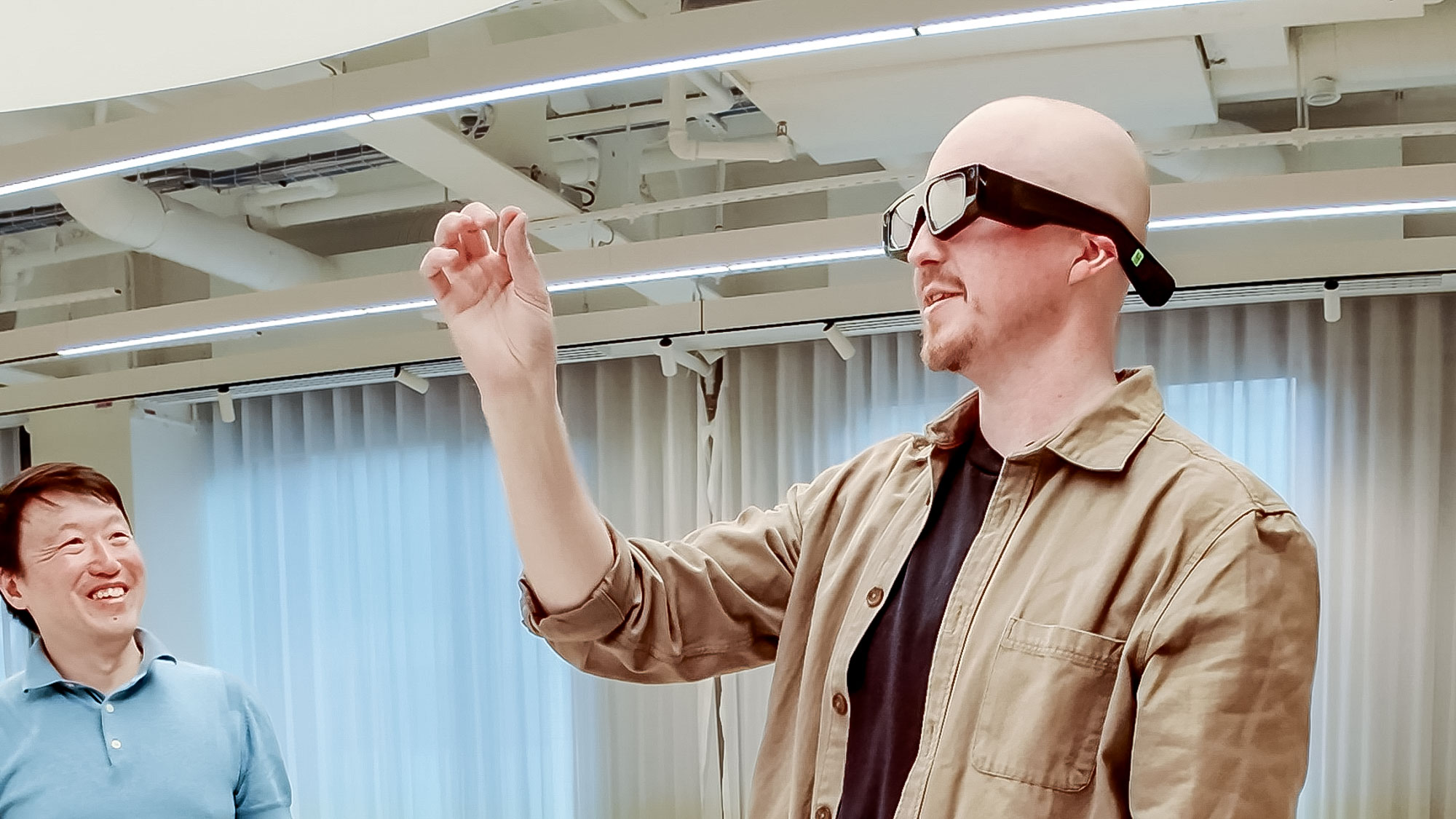How Google Will Make the Rest of Us Care About VR
Google's updates to its Daydream platform include a big emphasis on sharing content and dedicated headsets.

Google has teased some big things for Daydream, the company's virtual reality platform, including upcoming standalone VR headsets. But the company recently revealed what else it has in store for the burgeoning technology in a recent Google I/O keynote.
When it comes to virtual reality, Google is going for a two-pronged attack, focusing on hardware and software. On the hardware front, you have the standalone headsets that Google's partnering with Qualcomm, Lenovo and HTC that will be debuting later this year. The devices will be incorporating Google Project Tango's WorldSense technology that will give each headset 6-degrees of real-time tracking for head movements -- all without wires.

Those trackers will allow the wearer to duck and lean naturally. They will also let wearers use the headset while seated or standing. And lastly, the trackers will set a default starting position based on where you're standing as soon as you put the headset on, according to Google. This is a safety precaution so you don't go running into a wall or tripping over furniture. Google has also made it easier to program teleportation into games and apps so you don't have to move so much. Oculus Rift, Samsung Gear VR or the HTC Vive have, but it's a step in the right direction.
Google is looking for the virtual reality equivalent of Angry Birds.
During a subsequent keynote about what's new in Daydream, Google revealed that the company is looking for the virtual reality version of Rovio's Angry Birds. The company is also encouraging prospective developers to focus on making longer more meaningful virtual interactions, likening the ideal experience to a sit-down meal compared to a quick snack.
In order to help facilitate longer usage time, Google announced updates to the Daydream platform that will affect both Daydream View and the upcoming Standalone VR headsets dubbed Daydream 2.0 Euphrates. Set to launch later this year, Euphrates will be powered by Android O, which has been built specifically with VR in mind, including a new VR window manager that will let people easily interact with screens in virtual reality, just like you would with a regular touchscreen.
MORE: 13 Top Features of Android O
An example of this new manager is the System Dashboard that you can summon in the midst of your VR experience. Instead of having to exit Daydream to answer a phone call or grant app permission, you can do it quickly from this immersive take on the old notification shade. When summoned, the dashboard will sit on top of your current VR activity. When you're done, you can go back to playing or viewing without disengaging from virtual reality.
Sign up to get the BEST of Tom's Guide direct to your inbox.
Get instant access to breaking news, the hottest reviews, great deals and helpful tips.

Euphrates also ushers in a new look for Daydream Home, one that focuses on making content easier to discover. The main home screen will consist of a curated list of content that's constantly being updated to make sure you have easy access to the latest and greatest.
One problem VR software makers have been trying to combat since virtual reality starting becoming more mainstream is the perception that it's a one-person affair. Since sharing is indeed caring, Google Cast support will be coming in the Euphrates update. That means you'll be able to share your VR activities with your friends and family by casting it to a nearby television.
Google's developers have been playing around with the technology and found a way to do custom casts. In one demo, we saw the person wearing the Dayview Dream putting on a puppet show of sorts using the tracking to control the virtual puppet while the people in front of the big screen watched.
Other uses include multiplayer guessing games where either the VR user or people watching on television have to figure out what the other knows. Google Cast is all well and good for when everyone's under the same roof. But in those cases where the people you want to share with are scattered to the far corners of the earth, you'll soon have the ability to capture screenshots and video in VR. And once you've captured the shot you want, it will sync with your Google Photos account to share online at your leisure.

And if that isn't enough togetherness, YouTube VR will allow you and a few of VR-laden pals to watch YouTube videos in VR together. Well, sort of. Similar to Oculus Social, you and your friends will watch 360 videos in what looks like a virtual theater.
All in all, it looks like the rest of 2017 is going to be primetime for virtual reality headsets. I'm not sure if Google will be the one to finally get mainstream consumers on the VR bandwagon. But it's clear that Daydream is maturing on multiple fronts.
Sherri L. Smith has been cranking out product reviews for Laptopmag.com since 2011. In that time, she's reviewed more than her share of laptops, tablets, smartphones and everything in between. The resident gamer and audio junkie, Sherri was previously a managing editor for Black Web 2.0 and contributed to BET.Com and Popgadget.

